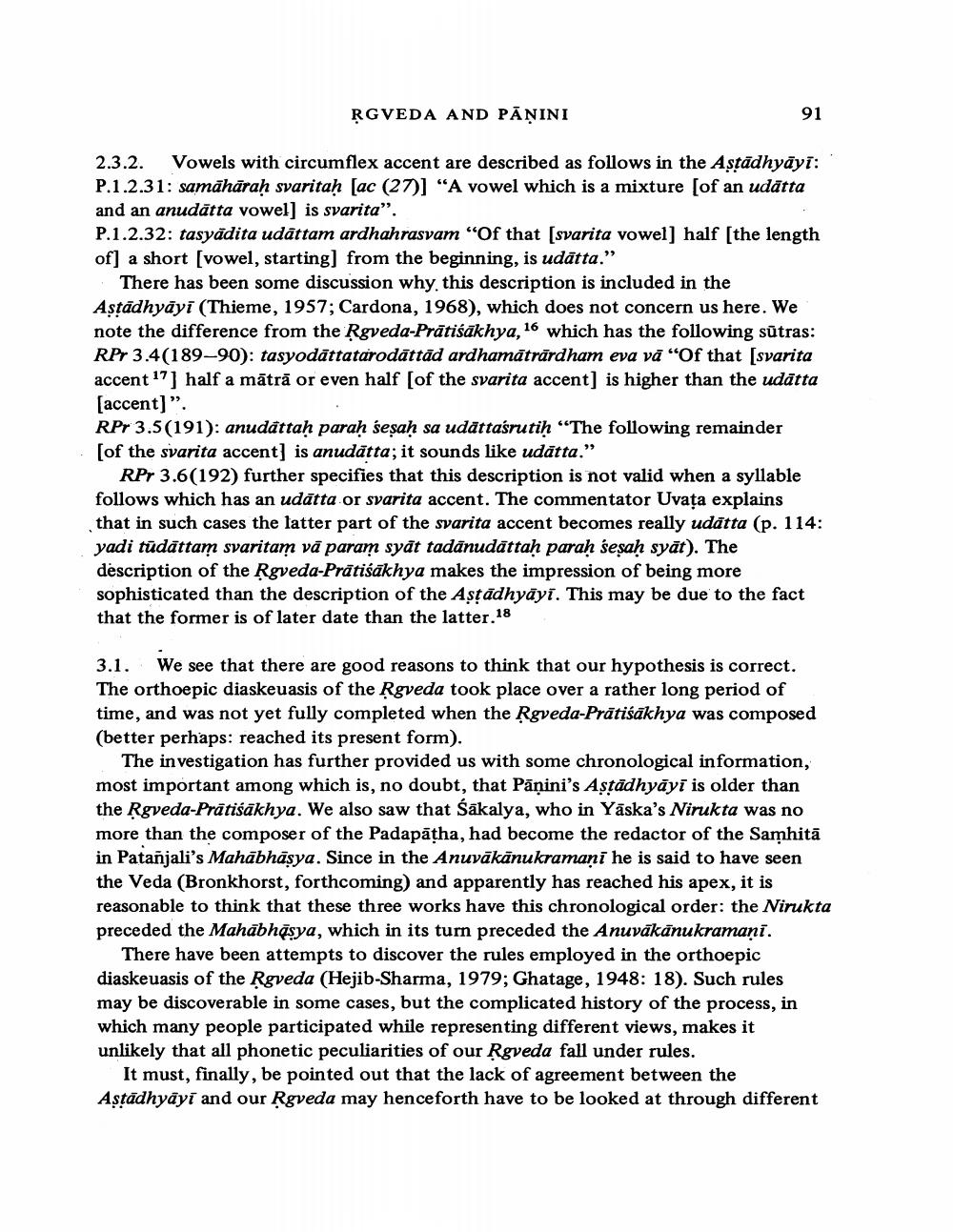________________
RGVEDA AND PĀŅINI
91
2.3.2. Vowels with circumflex accent are described as follows in the Astādhyāyi: P.1.2.31: samāhāraḥ svaritaḥ [ac (27)] "A vowel which is a mixture (of an udātta and an anudātta vowel] is svarita". P.1.2.32: tasyādita udāttam ardhahrasvam "Of that (svarita vowel] half (the length of] a short (vowel, starting) from the beginning, is udātta."
There has been some discussion why. this description is included in the Astādhyāyi (Thieme, 1957; Cardona, 1968), which does not concern us here. We note the difference from the Rgveda-Prātiśākhya, 16 which has the following sūtras: RP 3.4(189-90): tasyodāttatarodāttād ardhamātrārdham eva vā "Of that (svarita accent 17] half a mātrā or even half of the svarita accent) is higher than the udātta (accent)”. RPr 3.5(191): anudattah parah sesaḥ sa udāttaśrutih "The following remainder (of the svarita accent] is anudatta; it sounds like udātta."
RPT 3.6(192) further specifies that this description is not valid when a syllable follows which has an udātta or svarita accent. The commentator Uvaţa explains that in such cases the latter part of the svarita accent becomes really udātta (p. 114: yadi tūdāttam svaritam vā param syāt tadanudāttah parah sesah syāt). The description of the Rgveda-Prātiśākhya makes the impression of being more sophisticated than the description of the Astādhyāyi. This may be due to the fact that the former is of later date than the latter.18
3.1. We see that there are good reasons to think that our hypothesis is correct. The orthoepic diaskeuasis of the Rgveda took place over a rather long period of time, and was not yet fully completed when the Rgveda-Prātiśākhya was composed (better perhaps: reached its present form).
The investigation has further provided us with some chronological information, most important among which is, no doubt, that Pāṇini's Astādhyāyi is older than the Rgveda-Prātiśākhya. We also saw that Sakalya, who in Yaska's Nirukta was no more than the composer of the Padapātha, had become the redactor of the Samhita in Patanjali's Mahābhāsya. Since in the Anuvākānukramani he is said to have seen the Veda (Bronkhorst, forthcoming) and apparently has reached his apex, it is reasonable to think that these three works have this chronological order: the Nirukta preceded the Mahabhasya, which in its turn preceded the Anuvākānukramani.
There have been attempts to discover the rules employed in the orthoepic diaskeuasis of the Rgveda (Hejib-Sharma, 1979; Ghatage, 1948: 18). Such rules may be discoverable in some cases, but the complicated history of the process, in which many people participated while representing different views, makes it unlikely that all phonetic peculiarities of our Rgveda fall under rules.
It must, finally, be pointed out that the lack of agreement between the Astādhyāyi and our Rgveda may henceforth have to be looked at through different




